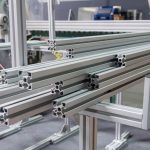
Do you find that your team seems like it is going through the motions, but lacks the actual fire of engagement and mission? You are not alone. Most companies struggle to translate a big-picture vision into the everyday motivation of their employees.
It is here that the OKR (Objectives and Key Results) framework comes in, not as a mere business tool but as an engine of employee engagement.
In the case of a strategic execution-focused company, such as Wave Nine, offering an OKR workshop template can be an ideal means of implementing this model. They focus on team-level, collaborative OKRs to create a sense of shared responsibility and ambition, which makes everyone in a row pull.
From Confusion to Crystal-Clear Alignment
Lack of clarity is a major cause of disengagement. Workers usually do not realise how their daily work helps the company achieve success. OKRs eliminate this mix by establishing direct visibility between individual efforts and company objectives.
This transparency gives a strong feeling of purpose, demonstrating that their contributions are important and can be quantified.
Building a Culture of Ownership and Trust
Micromanagement is a surefire way to kill engagement. OKRs fight this by reversing the script: It is about results, not activities. Employees are not dictated how to perform their duties, but they are provided with clear targets and left to figure out the most effective way to reach the target.
This ownership creates trust, empowers your team, and makes people feel truly responsible for the outcomes, which significantly makes them invest heavily in the work.
Creating a Transparent and Collaborative Environment
In a traditional workplace, goals can be siloed and secretive. OKRs rest on a transparency base. Once all the goals become transparent, it eradicates departmentalism and develops a teamwork spirit.
Employees can observe what the other teams are doing, which serves as an incentive for synergy and encourages people to consider how their piece fits into the bigger puzzle. This open atmosphere makes them feel that they belong to one team that is on a shared mission.

The Power of Recognition and Continuous Growth
One of the leading reasons why employees leave is a lack of appreciation. The effort is linked to outcomes in OKRs, and successes, both big and small, can be identified and celebrated easily.
The system checks in regularly to offer a consistent follow-up on the progress, which is essential in ensuring that people feel appreciated. Moreover, the post-cycle assessment is not only about success or failure, but it is also about learning.
This fosters a growth mentality where employees are pushed to be innovative and learn through their wins and their losses, and are always pushed and develop.
Connecting Daily Work to Meaningful Outcomes
Finally, OKRs change worker engagement, making abstract ideas concrete. They offer a structured and flexible means of ensuring that all the team members know their part in the company’s journey.
Through goal alignment, autonomy, and the integration of recognition into the process, the use of OKRs can create a workplace where individuals are not only present but motivated, connected, and empowered to do their best work.





